Picture an orchestra with no conductor. Each instrument sounds great on its own, but when each musician is playing their own song at the same time, no one wants to listen. When no one buys tickets, the concert hall loses money.
This is what’s happening in Europe’s execution of e-mobility. Multiple vendors are executing on many needs of the EV charging ecosystem. Political pressures have cities scrambling to adhere to new directives. Meanwhile, EV drivers are frustrated with their charging station experience. Half of the orchestra’s instruments are effectively broken.
Here are the four main issues cities face when transitioning their e-mobility infrastructure – and how to fix them.
#1: The decisions you were forced to make yesterday didn’t prepare you for today’s regulation
The Challenge
Perhaps the biggest directive to the e-mobility landscape is the Alternative Fuels Infrastructure Regulations (AFIR EU). This directive includes:
- One electric charging pool for every 60 km along main EU roads that’s accessible to all vehicles, including an easy payment plan.
- One electric charging pool for every 60 km for trucks and buses on core TEN-T networks.
- Alternative fuel data set up by 2027 that includes wait times, availability, and pricing across Europe.
This directive will also equip 15% of parking spaces with public chargers for E-Vehicles. They’re expected to be available at least 8 hours a day (6 days a week) with a minimum uptime of 98%.
Originally, the pressure was on European cities to get charging hardware on the ground as fast as possible, despite high ticket prices. In order to fund initiatives, energy companies, hardware companies, and consortiums were invited to invest in the first wave of infrastructure.
But now each city in each country has their own unique e-mobility ecosystem based on who invested in each sector.
Each vendor is playing on their own, without a consistent, strategic plan. This approach will not be capable of fulfilling the demands of the AFIR.
The Solution
City officials should be looking for a partner that understands the unique challenges and roadblocks at each step of the EV charging journey. Only a partner with a full understanding of the charging, hardware, and service components can help create a strategic plan to achieve current and future directives.
With a problem this complex, one off solutions for one off problems create more long term flaws in the e-mobility infrastructure. Cities need an e-mobility solution that solves many problems and creates a robust foundation for the future across the EV and transportation infrastructure.
#2: Charging stations are failing and range anxiety is increasing
The Challenge
15% of charge points are unavailable and 40% of all paid EV transactions fail. One of the biggest contributors to failing and unavailable chargers is a global boom for EV stations coupled by supply chain issues from COVID-19 and lithium shortages. There aren’t enough parts out there to fix broken charging stations.
The next greatest contributor is inoperable stations due to a shortage of skilled technicians to make repairs.
Other Reasons for Failing or Unavailable Charging Stations:
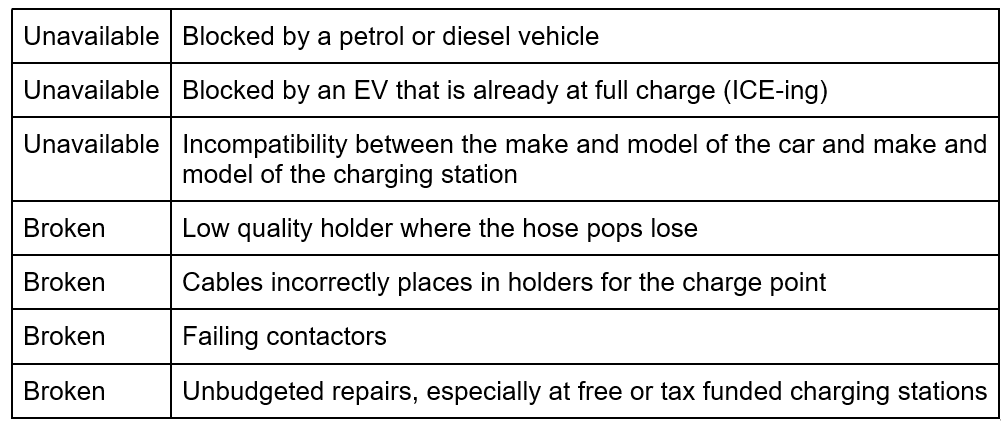
Unlike fuel stations, there is no one to monitor charging stations. Drivers call in issues as they arise. Then service providers have to call in the issue with the hardware provider – slowing repair times.
Since the number of functioning and available chargers is limited, queuing is becoming the norm in popular destinations. When drivers have an appointment to keep, or they are making a multi-modal journey that gives them only another fifteen minutes to catch a bus, train, or check-in at an airport, they might not trust the infrastructure enough to take their EV and risk scuppering their return journey.
The Solution
More reliable chargers translate to a reduction in range anxiety for drivers, and a wider adoption of EV drivers. Peace of mind only comes from knowing there will be a place to charge your car. This is why creating a reliable “Look and Book” experience across one app is integral for a satisfied user experience.
Flowbird is working towards creating a back end system that provides real time availability of charger parking spaces across a city’s entire infrastructure. There are a many types of parking that could be included, like:
- On street
- Off street
- Transport hub
- Corporate vendor
- Private residence
#3: Drivers want and need to pay simply and effortlessly, without registration
The Challenge
Given the haste and price point of e-mobility adoption, multiple players were introduced into the e-mobility ecosystem without standardised processes or agreements on how to operate. This creates friction for drivers.
Drivers are disappointed to have to download multiple apps with multiple payment programs to get around their city. Constantly registering with the latest service provider is difficult to manage and frustrating if the driver knows they aren’t likely to be in a part of town with that charger again.
Drivers want a generic solution for charging their EV anywhere.
This can be difficult due to the competing private interest of the organisations already involved. While most CPOs (charge point operators) only allow charging payments via their own RFID cards, moving to a singular payment process could minimise friction.
The Solution
To be a part of a city’s e-mobility, vendors should agree to a standardised payment and service provider.
Flowbird can help standardise payments and user experience. City officials will have to organise and align tenders within their work agreements, but this small step alleviates payment and customer service friction for EV users and allows cities to create standardised payment methods and pricing levels.
In an ideal world, EV drivers will soon pay for parking and charging in the same app or kiosk, and report any issues to the same customer support number – simplifying the process and building trust between a city and its citizens.
#4: Unconsolidated data makes it difficult to act fast and scale with confidence
The Challenge
Getting data from, say, 10 customer service, 10 energy, and 10 hardware providers is not ideal for harvesting valuable information and acting on it fast.
Without relevant and consistent data informing a city’s e-mobility plan, utilisation rates can drop. Outage times can increase. High-traffic areas can go underserved when more charging stations are needed. Worse, cities may try and scale their rollout of e-mobility infrastructure without the foundational insight they need to create a system that will meet current driver needs.
All these situations create frustration for EV drivers and a loss in revenue for vendors and the city.
The Solution
What cities across Europe need is one centralised hub. While each city will have its unique challenges, Flowbird’s platform is fully agnostic and can integrate any type of charging device or CPO using standard protocols.
We can provide partnerships with EVSE suppliers to offer charging hardware and installation services. Flowbird can create the connection between energy, hardware, and service providers to deliver real-time, applicable data.
After all, what gets measured is what gets done.
Flowbird: An end-to-end solution for a complex problem
Reaching the demands of climate change transportation directives is a complex problem. It requires streamlined support from B2Bs, B2Gs, B2Cs, and patrons. What’s most needed is a solution with urban intelligence that makes a journey easier, faster and safer.
When the orchestra doesn’t play together, the patrons don’t complain to the musicians. They complain to the manager or director of the concert hall. City officials, like directors and managers, are expected to create a great experience for drivers’ using their infrastructure. Not only for the sake of their reputation with locals and tourists, but also with political bodies such as the EU.
Want to learn more about how to make EV charging work for everyone?
Download our e-mobility report.

 International
International  Downtown West Chester Updates Its Parking System with Modern Payment Solutions
Downtown West Chester Updates Its Parking System with Modern Payment Solutions  Flowbird Garage Success Leads to On-Street Parking Expansion in Beverly Hills
Flowbird Garage Success Leads to On-Street Parking Expansion in Beverly Hills  The City of Leavenworth Updates Its Parking System with Effortless Parking Solutions
The City of Leavenworth Updates Its Parking System with Effortless Parking Solutions  Nouméa Modernizes Its Parking System with the Installation of New Flowbird Parking Meters
Nouméa Modernizes Its Parking System with the Installation of New Flowbird Parking Meters  SEPTA Partners with Flowbird to Launch Advanced Commuter Parking System
SEPTA Partners with Flowbird to Launch Advanced Commuter Parking System  Flowbird ticketing technology alights at Belfast Grand Central Station
Flowbird ticketing technology alights at Belfast Grand Central Station  Dallas Area Rapid Transit (DART) Partners with Flowbird to Modernize Transit System
Dallas Area Rapid Transit (DART) Partners with Flowbird to Modernize Transit System  Flowbird Group Secures 10-Year Contract to Revolutionize Warsaw’s Parking Infrastructure
Flowbird Group Secures 10-Year Contract to Revolutionize Warsaw’s Parking Infrastructure  Rochester Updates Its Parking System with 3 New User-Friendly Solutions
Rochester Updates Its Parking System with 3 New User-Friendly Solutions  Pittsburgh Regional Transit Partners with Flowbird for Fare Payment Solution
Pittsburgh Regional Transit Partners with Flowbird for Fare Payment Solution  Flowbird Successfully Delivers Advanced Parking Solutions to City of Poznań Road Department
Flowbird Successfully Delivers Advanced Parking Solutions to City of Poznań Road Department  Parking terminals reimagined – a smart way to reinvent on-street parking technology
Parking terminals reimagined – a smart way to reinvent on-street parking technology  Flowbird Systems Go Live in Madeira
Flowbird Systems Go Live in Madeira  The next poster cities for mobility
The next poster cities for mobility  What politicians and policy makers need to know about MaaS
What politicians and policy makers need to know about MaaS  MaaS start small and scale up
MaaS start small and scale up  Flowbird Pay-by-Plate Pay Stations Launch in the City of New York
Flowbird Pay-by-Plate Pay Stations Launch in the City of New York  Lyon chooses Flowbird for the implementation of its new progressive parking policy
Lyon chooses Flowbird for the implementation of its new progressive parking policy  Is MaaS an essential foundation for liveable cities?
Is MaaS an essential foundation for liveable cities?  Wyre Forest District Council car parks to have electric vehicle (EV) chargers installed
Wyre Forest District Council car parks to have electric vehicle (EV) chargers installed  Flowbird Supplies 500 Pay and Display Parking Meters in Bratislava!
Flowbird Supplies 500 Pay and Display Parking Meters in Bratislava!  MaaS: What cities need to do to make it work
MaaS: What cities need to do to make it work  Charleston, SC Updates Its Parking System with Effortless Digital Solutions
Charleston, SC Updates Its Parking System with Effortless Digital Solutions  Clearwater, Florida Launches Pay by Text Solution – No App or Account Required
Clearwater, Florida Launches Pay by Text Solution – No App or Account Required  Carlisle, PA To Update Its Parking System with User-Friendly Solution in 2024
Carlisle, PA To Update Its Parking System with User-Friendly Solution in 2024  Open Payments Launched In Toulouse – Contactless Card Validation!
Open Payments Launched In Toulouse – Contactless Card Validation!  Flowbird and Semitan join forces to make mobility effortless!
Flowbird and Semitan join forces to make mobility effortless!  Meet the Team: David Thompson
Meet the Team: David Thompson  Solving traffic flow – what politicians and policymakers need to know
Solving traffic flow – what politicians and policymakers need to know  The future of the roadside curb
The future of the roadside curb 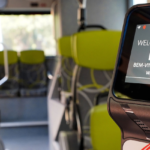 The future of the passenger experience and why effortlessness is the key
The future of the passenger experience and why effortlessness is the key  A guide to your city’s passengers: What you need to know
A guide to your city’s passengers: What you need to know  The 4 roadblocks in your city’s e-mobility plan
The 4 roadblocks in your city’s e-mobility plan  The road to zero-emissions cities (and, the parking when we get there)
The road to zero-emissions cities (and, the parking when we get there)  Why wait to decarbonise our regions?
Why wait to decarbonise our regions?  Flowbird Group takes a step forward in reshaping mobility through a strategic acquisition by EasyPark Group
Flowbird Group takes a step forward in reshaping mobility through a strategic acquisition by EasyPark Group  Park&Charge: Meet our expert
Park&Charge: Meet our expert 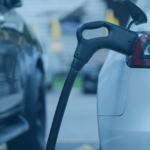 Flowbird gives cities a fast-track to e-mobility readiness
Flowbird gives cities a fast-track to e-mobility readiness 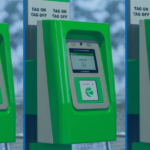 Coming soon to Perth: ‘tap to ride’ with your bank card or device
Coming soon to Perth: ‘tap to ride’ with your bank card or device  What’s next after open-loop transit payments?
What’s next after open-loop transit payments?  What would motivate you to use your car less?
What would motivate you to use your car less? 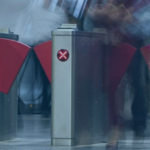 How to Boost the Efficiency of Fare Collection
How to Boost the Efficiency of Fare Collection  Lothian Buses new record: 100,000 taps in a day!
Lothian Buses new record: 100,000 taps in a day!  Smart Transport Ticketing: Benefits for Operators and Passengers
Smart Transport Ticketing: Benefits for Operators and Passengers 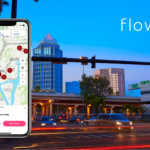 Flowbird App Empowers Tampa’s Parking Experience with Multi-App Integration
Flowbird App Empowers Tampa’s Parking Experience with Multi-App Integration  Meet the team: Justin Pounder
Meet the team: Justin Pounder  Flowbird, Umojo Partner for Off-Street Solution in Portand
Flowbird, Umojo Partner for Off-Street Solution in Portand  Cash versus digital payments in mobility systems
Cash versus digital payments in mobility systems  Flowbird teams up with Zuora to advance digitalisation and growth
Flowbird teams up with Zuora to advance digitalisation and growth  Flowbird app & Pay by Text now available in Sewickley!
Flowbird app & Pay by Text now available in Sewickley!  FabMob and Flowbird lead the way for accessible, sustainable mobility
FabMob and Flowbird lead the way for accessible, sustainable mobility  Passenger apps: Take 5 operator benefits
Passenger apps: Take 5 operator benefits  Contactless Interac Debit fare payments launch on Laval buses
Contactless Interac Debit fare payments launch on Laval buses  Edinburgh tramline extended to provide a route across the city
Edinburgh tramline extended to provide a route across the city  Take 5… Transport authority benefits of Account Based Ticketing
Take 5… Transport authority benefits of Account Based Ticketing  Parkex | Birmingham | 2023
Parkex | Birmingham | 2023  Flowbird Partners with the City of Minneapolis to Launch New & Improved MPLS Parking App
Flowbird Partners with the City of Minneapolis to Launch New & Improved MPLS Parking App 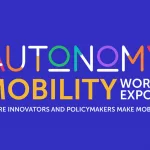 Flowbird presents its vision for connected urban mobility at AMWE in Paris
Flowbird presents its vision for connected urban mobility at AMWE in Paris  Clermont Ferrand makes the move to open payments on transport
Clermont Ferrand makes the move to open payments on transport  Flowbird’s transport talking points at Transport Ticketing Global
Flowbird’s transport talking points at Transport Ticketing Global 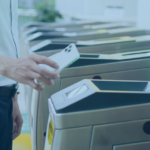 Take 5… Operator benefits of open payments in transport
Take 5… Operator benefits of open payments in transport  Flowbird envisions the transport ticket of tomorrow
Flowbird envisions the transport ticket of tomorrow  Ticketing & payments – a vital enabler of National Bus Strategy
Ticketing & payments – a vital enabler of National Bus Strategy  Flowbird announce new additions to the management team further to accelerate growth ambitions within the UK parking sector
Flowbird announce new additions to the management team further to accelerate growth ambitions within the UK parking sector  New London Brings Additional Convenience Parkers with Flowbird App
New London Brings Additional Convenience Parkers with Flowbird App  Podcast: Will transport payments drive a MaaS revolution?
Podcast: Will transport payments drive a MaaS revolution?  Take 5… Passenger benefits of open payments on transport
Take 5… Passenger benefits of open payments on transport  South Orange Parking Authority Updates Its Parking System with User-Friendly Solution
South Orange Parking Authority Updates Its Parking System with User-Friendly Solution  New ParkNYC App Proves to be Unrivaled Success in First 30 Days
New ParkNYC App Proves to be Unrivaled Success in First 30 Days 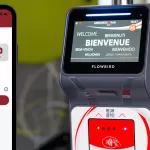 Monapass – One App, One Account, for Open Ticket Mobility
Monapass – One App, One Account, for Open Ticket Mobility  Translink Milestone for National Account Based Ticketing System for Northern Ireland
Translink Milestone for National Account Based Ticketing System for Northern Ireland  Flowbird Announces New CEO
Flowbird Announces New CEO  Flowbird unveils Off-Street Solution at IPMI 2022
Flowbird unveils Off-Street Solution at IPMI 2022  Flowbird is featured in the “Ticketing in Mobility as a Service” handbook published by UITP & STA
Flowbird is featured in the “Ticketing in Mobility as a Service” handbook published by UITP & STA  Flowbird Group acquires Your Parking Space
Flowbird Group acquires Your Parking Space  Transport Ticketing Global | London | 2022
Transport Ticketing Global | London | 2022  AIPARK Pdays | Florence | 2022
AIPARK Pdays | Florence | 2022 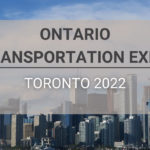 Ontario Transportation Expo | Toronto | 2022
Ontario Transportation Expo | Toronto | 2022 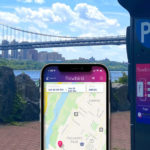 Flowbird Implements Automated Parking System To Palisades Interstate Parks
Flowbird Implements Automated Parking System To Palisades Interstate Parks  Smart City Forum | Warsaw | 2022
Smart City Forum | Warsaw | 2022  Birmingham Jefferson County Transit Authority Partners with Flowbird
Birmingham Jefferson County Transit Authority Partners with Flowbird  PARKEX | Birmingham | 2022
PARKEX | Birmingham | 2022  EVS35 | Oslo | 2022
EVS35 | Oslo | 2022  European Mobility Expo | Paris | 2022
European Mobility Expo | Paris | 2022  Konferencja SPP | Grudziądz | 2022
Konferencja SPP | Grudziądz | 2022  Svepark Conference | Gävle | 2022
Svepark Conference | Gävle | 2022  Milipol Qatar 2022
Milipol Qatar 2022  Mobility Hubs | London | 2022
Mobility Hubs | London | 2022  MILIPOL Qatar | Doha | 2022
MILIPOL Qatar | Doha | 2022 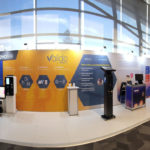 A look back at the PACE 2022
A look back at the PACE 2022  Thank you for visiting us at Intertraffic Amsterdam
Thank you for visiting us at Intertraffic Amsterdam 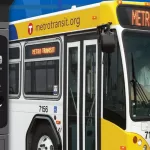 Flowbird Group to Expand Off-Board Fare Payments for Metro Transit
Flowbird Group to Expand Off-Board Fare Payments for Metro Transit 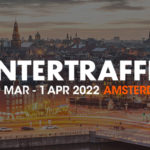 Intertraffic | Amsterdam | 2022
Intertraffic | Amsterdam | 2022  Flowbird completes first ever local authority Electric Vehicle charge point project for Wokingham Borough Council
Flowbird completes first ever local authority Electric Vehicle charge point project for Wokingham Borough Council  Podcast: the rise of open payments in transport
Podcast: the rise of open payments in transport 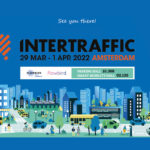 See you soon at Intertraffic Amsterdam 2022!
See you soon at Intertraffic Amsterdam 2022!  Flowbird is excited to share with you the latest news about Hong Kong!
Flowbird is excited to share with you the latest news about Hong Kong! 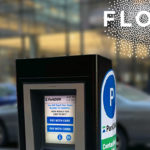 City of Des Moines upgrades to smart multi-space technology with Flowbird Group
City of Des Moines upgrades to smart multi-space technology with Flowbird Group 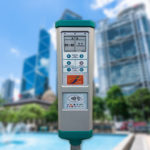 Flowbird trusted by HKT for their Smart City program
Flowbird trusted by HKT for their Smart City program 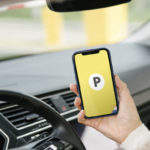 Flowbird announces a licensing agreement with Concar
Flowbird announces a licensing agreement with Concar  Mobility Awards City Rail & Transport
Mobility Awards City Rail & Transport  A great strategic win in Hamburg
A great strategic win in Hamburg 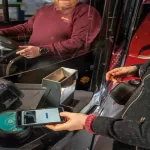 Lothian Adopts Weekly Capping with Support from Flowbird
Lothian Adopts Weekly Capping with Support from Flowbird  Tisséo, Flowbird and CIC deploy Open Payment in Toulouse
Tisséo, Flowbird and CIC deploy Open Payment in Toulouse 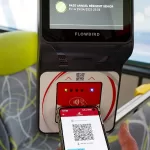 International Spotlight falls on MaaS in Monaco
International Spotlight falls on MaaS in Monaco 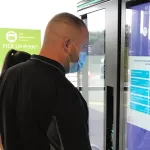 Northern Completes Major UK On-Station Rail Retailing Rollout
Northern Completes Major UK On-Station Rail Retailing Rollout  Flowbird Transforms Urban Mobility in Monaco
Flowbird Transforms Urban Mobility in Monaco 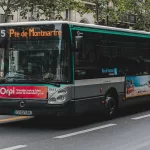 Conduent Transportation and Flowbird Selected to Equip Paris Ile-de-France Mobilités’ Buses and Trams with Next-Generation Onboard Ticketing Platform
Conduent Transportation and Flowbird Selected to Equip Paris Ile-de-France Mobilités’ Buses and Trams with Next-Generation Onboard Ticketing Platform  Flowbird’s Open Payments Expertise Wins Innovation Award
Flowbird’s Open Payments Expertise Wins Innovation Award  STL teams up with Flowbird and other new business partners to deliver a Québec First ― Next-generation credit card payment solution on all Laval buses
STL teams up with Flowbird and other new business partners to deliver a Québec First ― Next-generation credit card payment solution on all Laval buses 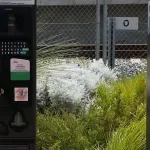 Flowbird Extends Ticketless Parking Across Transperth SmartRider Network
Flowbird Extends Ticketless Parking Across Transperth SmartRider Network 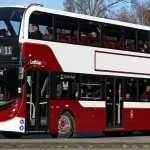 One million ‘taps’…and counting
One million ‘taps’…and counting 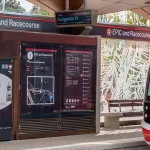 Canberra Launches Smart City Light Rail Network with Flowbird Technology
Canberra Launches Smart City Light Rail Network with Flowbird Technology  Flowbird Releases Mobile Ticketing App – ‘Loop Trolley’ App is Now Live in St. Louis, Missouri
Flowbird Releases Mobile Ticketing App – ‘Loop Trolley’ App is Now Live in St. Louis, Missouri 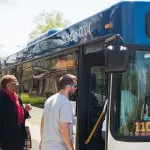 IndyGo Partners with Flowbird to Modernise Fare Collection System
IndyGo Partners with Flowbird to Modernise Fare Collection System  Transperth Extends Partnership with Flowbird Transport Intelligence
Transperth Extends Partnership with Flowbird Transport Intelligence 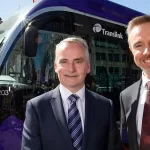 World-class ticketing system glides into Belfast
World-class ticketing system glides into Belfast  Edinburgh Trams Taps into Contactless Benefits
Edinburgh Trams Taps into Contactless Benefits 